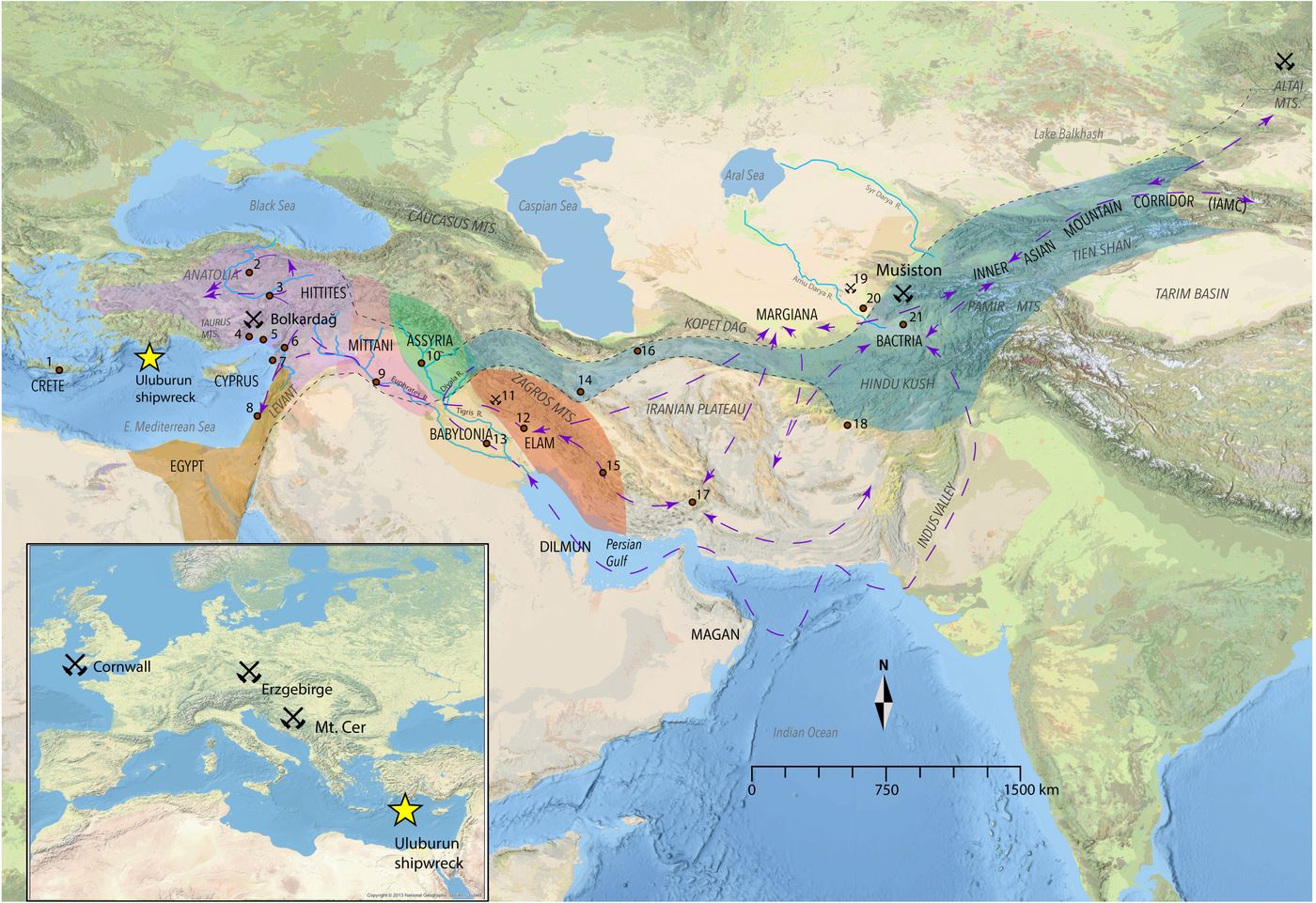Bronze Age Shipwreck Continues to Provide Clues 41 Years Later
If you ever had the chance to take an Intro to Archaeology class or are an avid ancient history buff, you’ve probably heard of the Uluburun Shipwreck.
If not, here’s a basic run down. Discovered in 1982 off the southern coast of Turkey, the Uluburun Shipwreck is one of the best sources we have of far-reaching trade across the ancient Mediterranean world. It is also one of the most famous underwater archaeological excavations.The ship dates to the Late Bronze Age around 1300 BC (the 14th century BC), which for some context, is the same period as the New Kingdom in Egypt. In fact, the ship may date to sometime during or after the lifetime of Nefertiti due to a golden scarab engraved with her name found in the wreck.
Unfortunately, the ship was transporting valuable resources and raw materials from throughout the Mediterranean when it sank. The amount of copper and tin on the vessel is estimated to have been enough to make 11 metric tons of bronze, or 5000 bronze swords.
The materials on board have been able to tell us a lot about Bronze Age travel, trade, and communication. Still, 41 years later, it is taking archaeologists a lot further than previously thought.
A team from Washington University in St. Louis made an exciting discovery by finding the source of the tin found with the ship. One-half of the recipe for bronze, tin was an important resource; however, it was difficult to find in the Mediterranean and had to be sourced elsewhere. Where this tin came from, and in what quantities, has been an archaeological question for a very long time.
The team conducted an isotopic analysis of the lead and tin recovered from the wreck and matched the geochemical makeup of the ship's ore to known mining locations.
Map showing the vast trade network from Uzbekistan to the Mediterranean, and the location of the Uluburun shipwreck. Map provided by Michael Frachetti/Washington University in St. Louis via
The discovery shows that people living in the highlands of Uzbekistan were the suppliers of roughly 1/3 of the tin making its way into the Mediterranean. The people living in this region at the time were not part of a major urban center or empire but established and maintained a major trading network “outside the control of kings, emperors or other political organizations.” The above map shows the journey this tin and the people transporting it across complex trade networks would have had to traverse to make it to the Mediterranean coast, where it ultimately ended up.
Professor Michael Frachetti of the Washington University team puts it into a modern perspective stating that “this would be the equivalent of the entire United States sourcing its energy needs from small backyard oil rigs in central Kansas.”The Uluburun shipwreck has been an incredible source of information for archaeologists for decades, and this study confirms that we only have more to discover from its cargo.
Sources: The International Journal of Nautical Archaeology, Cemal Pulak (2005) "Discovering a Royal Ship from the Age of King Tut: Uluburun, Turkey". In Beneath the Seven Seas: Adventures with the Institute of Nautical Archaeology (George Fletcher Bass), EurekAlert!, Science Advances
Cover Image Credit: Cemal Pulak/Texas A&M University via
Additional images from Washington University in St. Louis via EurekAlert!











